Today we are going to take a quick look at the Netgear GS305EP 5-Port Gigabit PoE switch. Since summer is a slower time, and STH is in the middle of our studio move, we are doing a little PoE switch series. We have already taken a quick look at the Netgear GS108PP 8-Port PoE+ switch and also the TP-Link 5-Port Gigabit PoE Switch Review TL-SG1005P. More recently, we looked at the Netgear GS305P 55W 5-port PoE Switch Review and will have the POE+ 63W version of that switch reviewed shortly. Still, this Netgear GS305EP is a 63W PoE+ switch that avoids some of the confusion with the GS305P models. Compared to the GS305P-100NAS it adds some basic L2 management functionality and PoE+ at 63W total (versus PoE at 55W) all for only a $5 premium. Let us get to our review.
Netgear GS305EP 63W Hardware Overview
This is a very simple switch like the GS305P. We have a different set There are five RJ45 1GbE ports on front. This is not actually a “5-port PoE switch” as much as it is a “5-port switch that has PoE”. Most of the marketing makes it clear that only four of the ports are PoE capable.
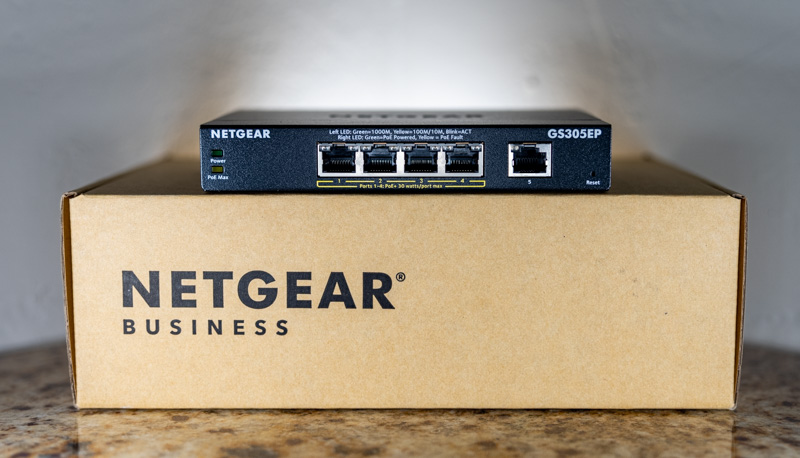
The PoE+ ports provide a maximum of 30W per port. If you want to learn more about the key differences of PoE vs PoE+ vs PoE++ switches we have a STH guide. We get an external 68W power supply for the unit which allows us to get the 63W available across the four ports. Most devices do not use 100% of a PoE power budget so some oversubscription is common in the industry. This is a lot of oversubscription if we are being frank since one can only run half the ports at 30W before effectively running out of usable power.
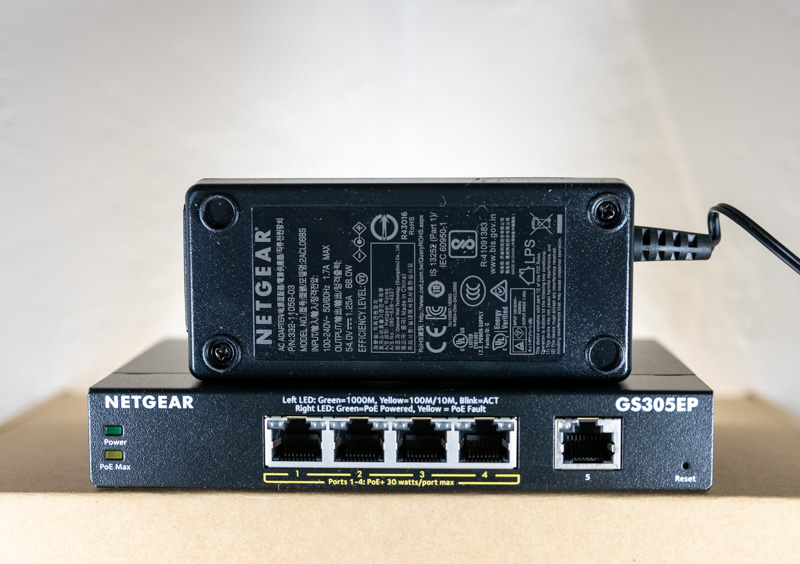
if you saw our GS305P 55W review the hardware is going to look very familiar so we are using a different photography set setup with the brown box. This is actually a difference since the GS305P-100NAS and GS305P-200NAS (V1 and V2) use a more colorful box design with the features on display. Instead, with the GS305EP-100NAS we get only the brown box.
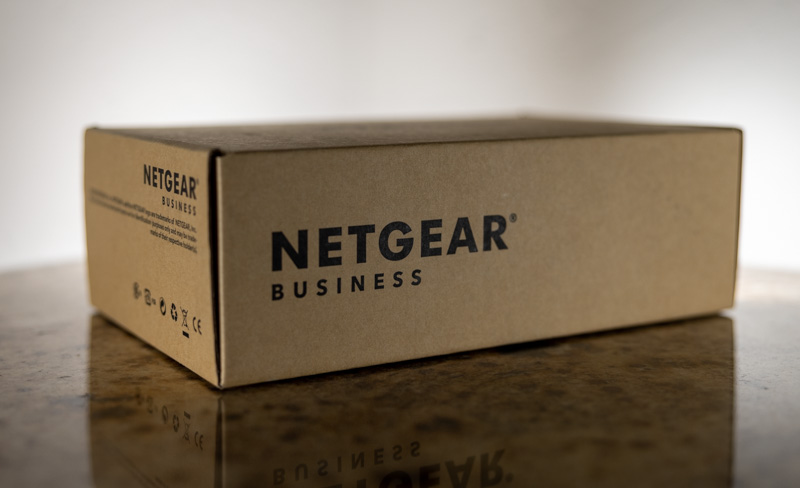
The rear of the unit is fairly simple except for a lock port and a power input port. The power input is 54V 1.25A. These seem to be 1.25A PSUs and Netgear uses higher voltage to get more power. Also on the rear of the unit we get the model, firmware, and MAC address. Since this has some management functionality, this is a change versus the unmanaged PoE/PoE+ GS305 switches.
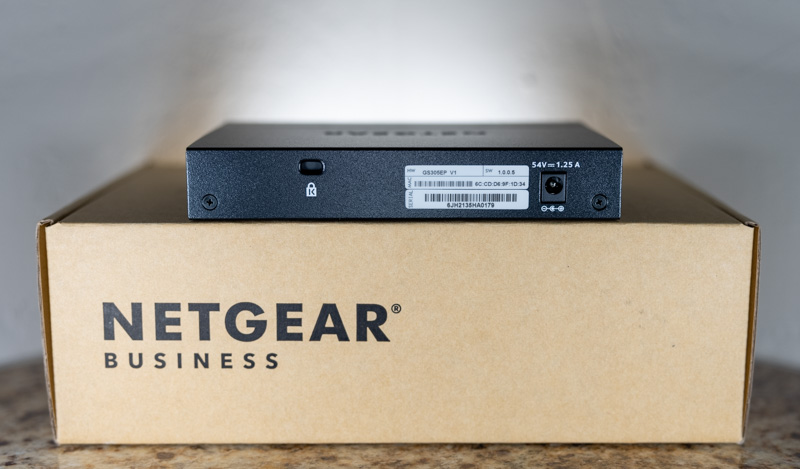
Inside the switch, we see a very small PCB with a large cutout to save costs. The switch chip is covered by an affixed heatsink in this version while the GS305P-100NAS did not have a heatsink.
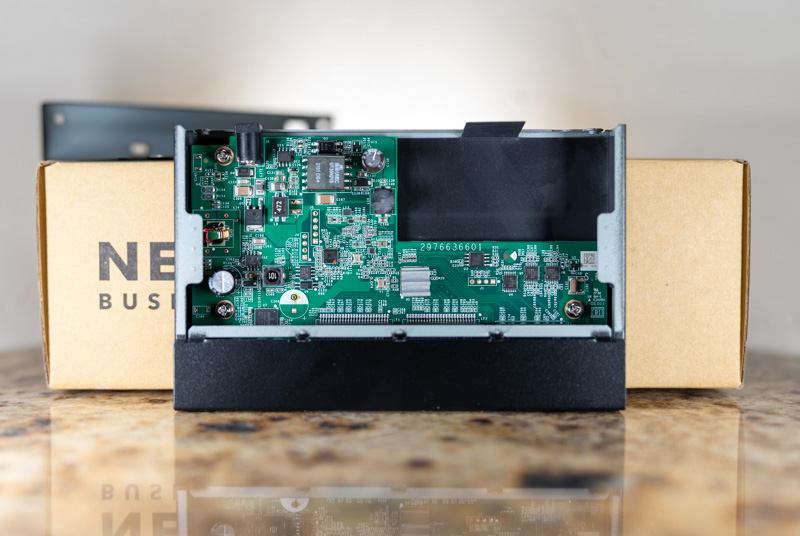
Let us get to the management features since those are what differentiate this offering more than the hardware.

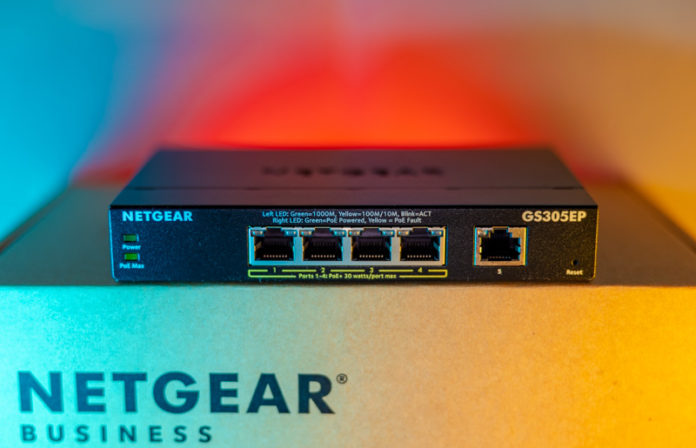



Is the switch itself a PoE {consuming} device?
(if so, might be handy in some limited scenarios)
One Netgear page depicts it connected with no DC cord in sight (but then they also depict the bare device with nothing connected and all the LEDs lit). Manual provided no illumination on this question, so to speak.
No,
I have 8 port version.
Netgear GS308EPP
You need power adapter to power the switch.
PoE/PoE+ functionality is PoE output only!
You might want to take a look at MikroTik hEX PoE or hEX S.
Technically these are sold as wired routers.
But you can choose if you want to run MikroTik’s Router OS or Switch OS on them. You can use them as managed switch and they are affordable (approx 70-80$).
hEX PoE and hEX S has one PoE input port as well as one (hEX S) or several (hEX PoE) PoE output ports.
If you intend to use several PoE devices attached to a hEX PoE.
You probably should have it powered with power supply.
But if you only want the router/switch to be PoE powered, you can absolutely do that.
would it be possible to post a guide to setup the vlans using this new user interface that differs from the previous switches? i only ask because there is a lack of guides for this.